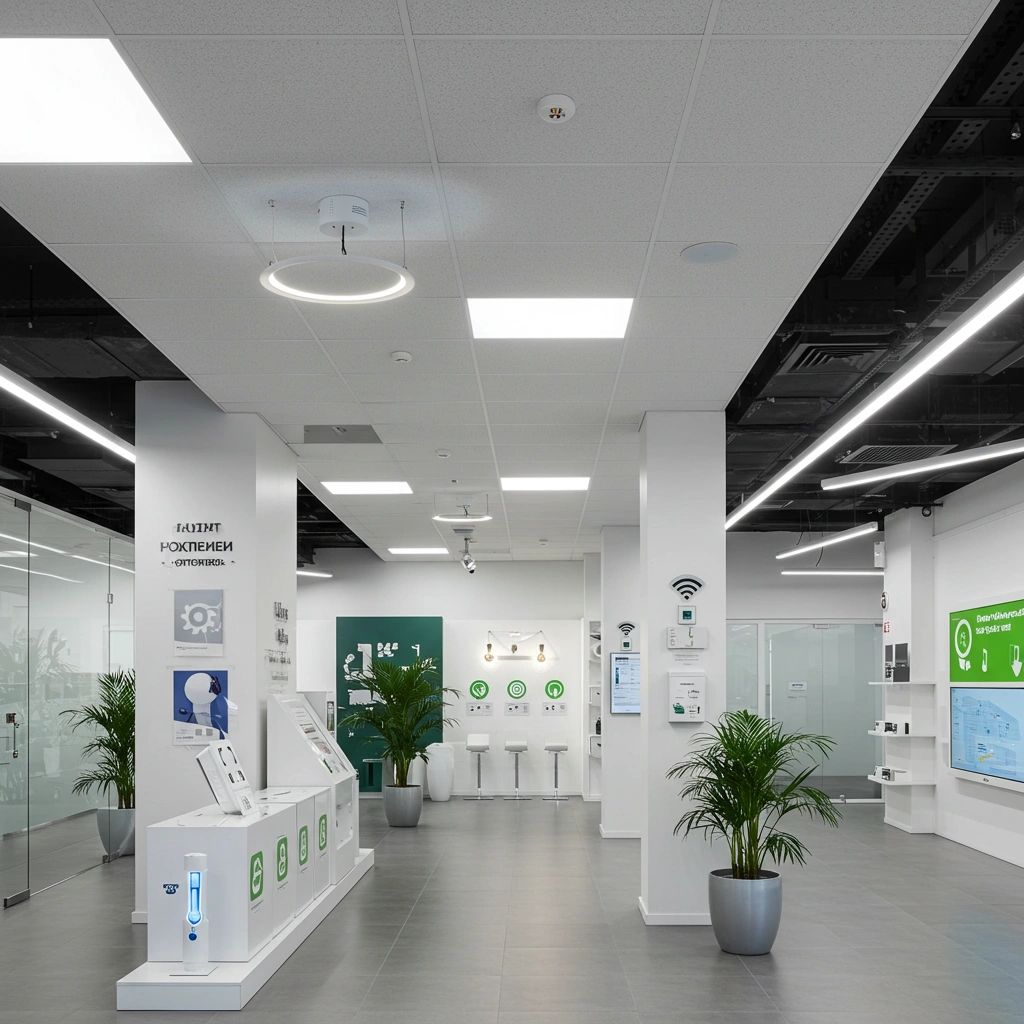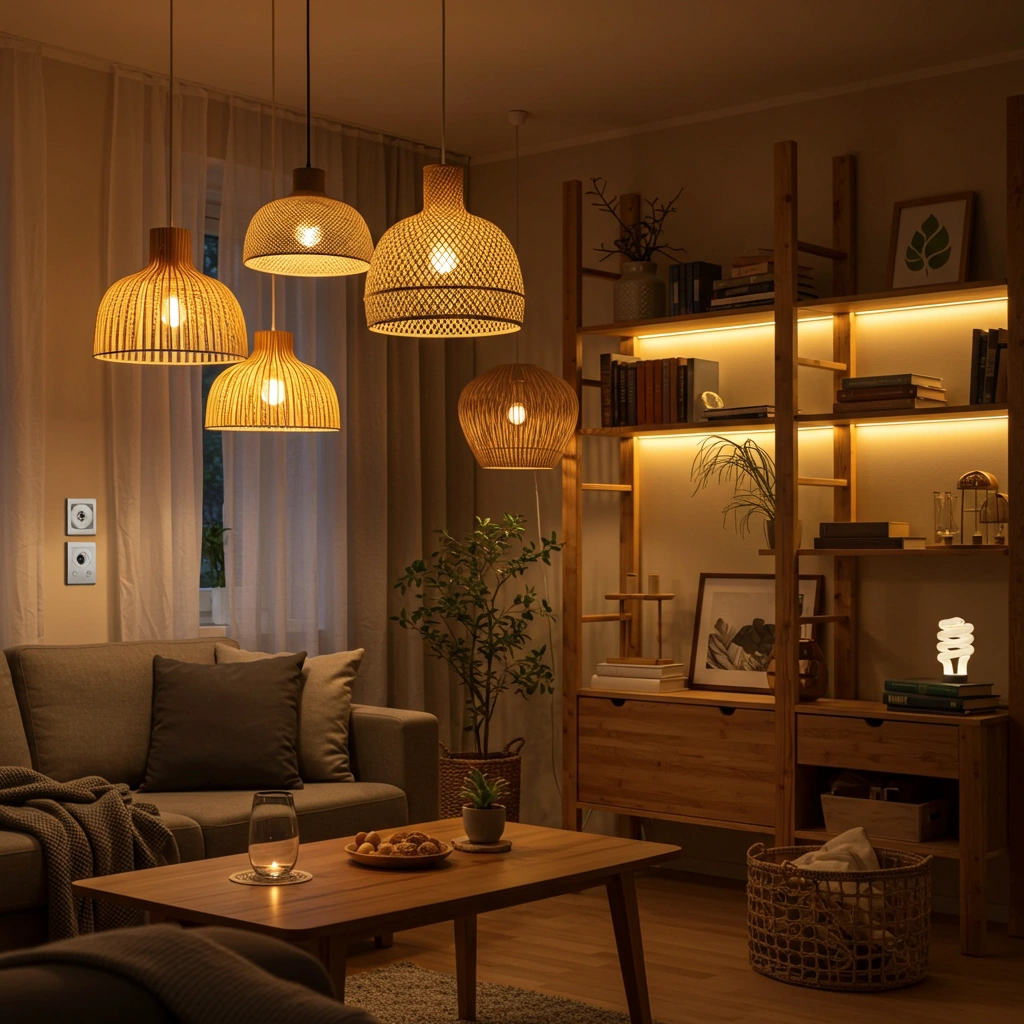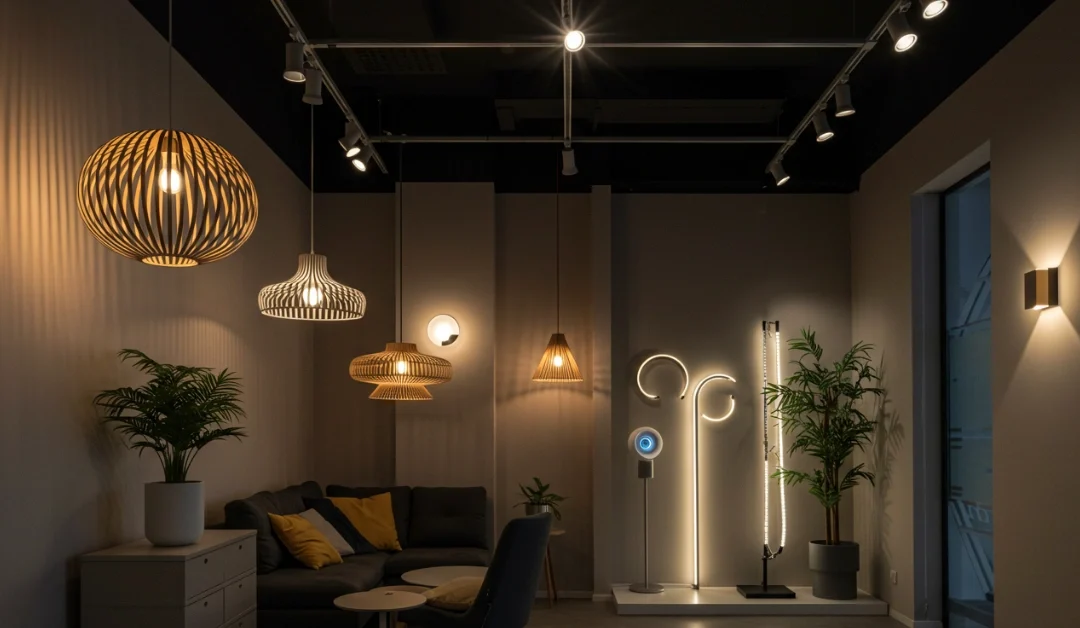Energy-efficient lighting is being chosen by more people every year. It is loved because it saves money and helps the planet. In 2025, new trends are being created to make lights even better.
These trends mix style and savings, so homes look nice while using less power. For example, LED lights are being used in smart homes to reduce electricity bills by up to 80% compared to old bulbs.
1. What Are the Top Energy-Efficient Lighting Trends for 2025?

1. What Is Smart Lighting Integration with AI & Voice Control?
Smart lights are being controlled by apps, voice, or even AI. For example, lights can turn on when you say, “Hey, light up the room!” or adjust brightness automatically. This trend is growing fast, and smart lighting systems are being bought by many homeowners. Some systems even learn your habits and adjust lighting for you!
New in 2025:
- AI-powered sensors detect motion and sunlight to adjust brightness.
- Voice control works with devices like Alexa or Google Home.
2. How Do Biophilic Lighting Designs Bring Nature Indoors?
Lights are being made to look like sunlight or moonlight. These designs make rooms feel calm and natural. For more ideas on blending nature with design, check out grass cloth wallpaper vs. peel-stick wallpaper.
New in 2025:
- Circadian lighting mimics natural daylight cycles to improve sleep and mood.
- UV-free LED panels replicate the glow of sunlight without heat.
3. Is OLED Lighting the Future of Thin, Flexible Illumination?
OLED lights are being made thinner and bendier. They can be placed on walls or ceilings like stickers! These lights use little energy and are perfect for modern homes.
New in 2025:
- Wallpaper-style OLED panels are being installed in UAE luxury apartments.
- Prices are dropping, making them more affordable for everyday buyers.
4. Can Solar-Powered and Off-Grid Lighting Help Save Energy?
Solar lights are powered by the sun. They are great for outdoor spaces like gardens or patios. To learn more about outdoor shading, visit outdoor spaces with furniture and sunshades.
New in 2025:
- Solar batteries store extra energy for cloudy days or night use.
- Solar string lights are being used for weddings and events.
5. Do Statement Pendant Lights Combine Style and Efficiency?
Pendant lights are being chosen for their bold looks and energy-saving bulbs. They hang from ceilings and add flair to living rooms or kitchens.
New in 2025:
- Customizable colors let you match lights to your room’s theme.
- 3D-printed designs offer unique shapes at lower costs.
6. Are Minimalist LED Panels Perfect for Modern Interiors?
LED panels are being installed in ceilings for a clean, modern look. They are bright, use little power, and match any room style.
New in 2025:
- Touch-controlled panels let you dim or change colors with a tap.
- Slim designs fit into tight spaces like bathrooms or hallways.
7. How Can Color-Changing LED Strips Enhance Your Home Mood?
LED strips are being stuck behind TVs, shelves, or bed frames. They change colors to match moods or events (like blue for calm or red for parties!).
New in 2025:
- App-controlled strips sync with music or movies.
- Energy ratings now show how much power each strip uses.
2. How Do You Choose the Right Eco-Friendly Light for Your Home?

- Look for the label “Energy Star” – These lights are tested for efficiency.
- Pick LED bulbs – They last longer and use 80% less energy than old bulbs.
- Match lights to room use – Bright white lights are good for kitchens, while soft yellow lights work for bedrooms.
For tips on choosing window treatments that save energy, read about how window films are a smart choice for your home.
3. How Can Sustainable Lighting Shape the Future of Home Design?
In 2025, lighting is not just about brightness – it’s about saving energy, looking stylish, and making homes smarter. By choosing eco-friendly lights, homes will use less power, lower bills, and help the planet.
4. What Are the Most Common Questions About Energy-Efficient Lighting?
Yes! LED lights are cool to the touch and do not get hot like old bulbs.
Yes, they can! Solar lights store energy for days when the sun isn’t shining.
They cost a little more at first, but they save money over time by using less power.
LEDs produce less heat than halogen bulbs.
Solar lights reduce AC usage by cutting indoor heat.

